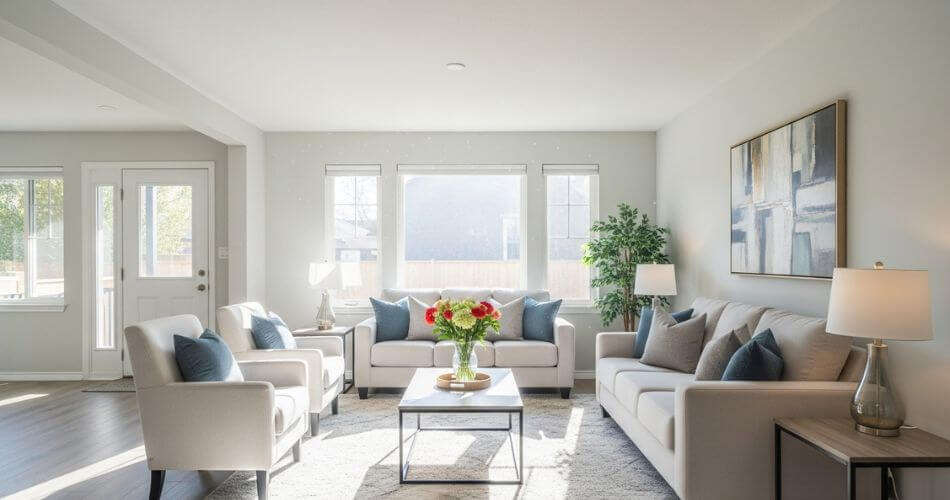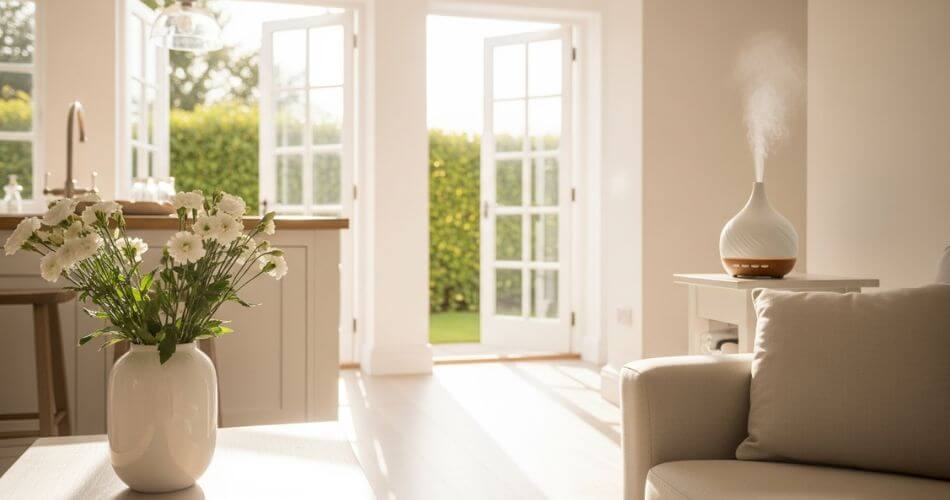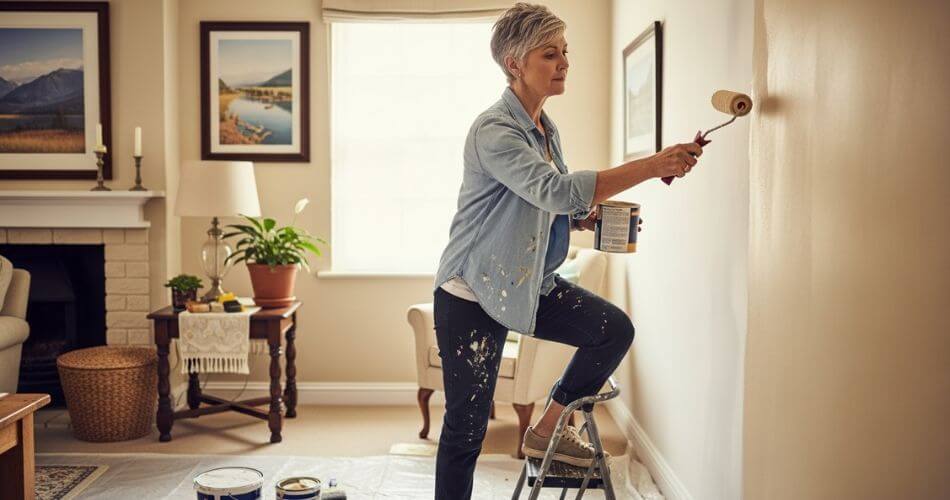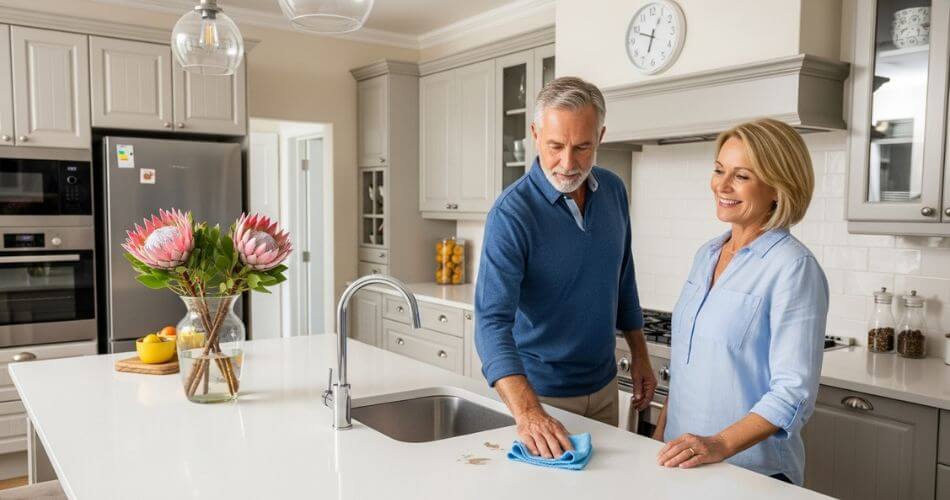Preparing your home for sale in Brackenfell
The Definitive Brackenfell Seller's Guide: A Blueprint for a Premier Sale
Master the First Impressions, Avoid Costly Mistakes, and Secure a Top-Tier Offer in Today’s Market.

Preparing your home for sale in Brackenfell begins with a simple truth: perception shapes price. This guide gives Brackenfell homeowners a clear, practical blueprint to prepare a property that attracts confident buyers.
The Critical First Impression – Winning the Sale from the Kerb

The Psychology of Arrival: Your Home’s First Handshake.
Buyers form an immediate opinion within seconds of arrival. That first visual contact with the neighbourhood, front yard, and entrance sets a tone that will colour the rest of the viewing.
When the approach is neat and the entrance reads as cared for, buyers are primed to look for value. When the exterior shows neglect, they look for confirmation of problems inside. Managing this short window reduces the chance that viewers will disqualify the property early on.
A well-prepared exterior signals pride of ownership and suggests hidden systems are likely maintained. This psychological shift changes how buyers interpret minor interior flaws, making them more forgiving and more likely to make an offer. The seller’s task is to shape that first impression deliberately.
A Strategic Checklist for High-Impact Kerb Appeal.
Prioritise mowing, pruning, and weeding to present tidy beds and clear sightlines to the house. Power wash paths and the driveway to remove grime and reveal surface quality.
Fresh paint on the front door, clean numbers, and polished hardware create an immediate focal point that feels welcoming and current. Repair cracked paving and clear gutters so maintenance does not become a negotiation point.
Simple low-voltage pathway lighting for evening viewings adds safety and mood without large expense.
These targeted steps are low-cost but change the buyer’s first narrative, increasing the likelihood of a stronger offer before the viewing begins.
The Art of Staging – Creating an Irresistible Interior

Staging by the Numbers: The Proven ROI in the South African Market.
Staging is an investment with a measurable return. Professionally presented homes can attract higher offers and sell faster because they reduce buyer hesitation.
Presenting a neutral, move-in-ready product helps buyers form an emotional connection quickly. In Brackenfell, where buyers compare multiple listings, staging signals that the seller has prepared the property for sale and respects the buyer’s time.
This practical signal often translates into fewer price concessions and shorter marketing windows. For sellers with limited budgets, focus on the highest impact actions that produce visible results and reduce the need for negotiation.
The Three Pillars of Effective Staging.
Declutter and depersonalise to allow buyers to picture their own life in the rooms. Use affordable home staging tips for a quick sale, such as removing excess furniture, clearing surfaces, and organising storage so closets appear generous.
Deep cleaning is essential: steam carpets, descale bathrooms, and polish kitchen surfaces to show care and attention.
Define rooms with correctly scaled furniture and clear circulation paths. Pull furniture slightly from the walls to create perceived space and guide movement. These steps reduce friction in the buyer’s decision process and help listings convert viewings into offers more efficiently.
Sensory Selling – Mastering Light, Scent, and Space

Let There Be Light: The Power of Illumination.
Maximise natural light by fully opening curtains and making sure windows are clean. Replace weak bulbs with brighter LEDs and add lamps where needed to remove shadows. Good lighting reveals finishes and makes rooms feel larger and safer, which buyers use as a quick condition cue.
These practical lighting choices change perception immediately and help buyers focus on features rather than flaws.
The Scent Strategy: From Eliminating Odours to Creating Ambiance.
A top priority is to remove persistent smells rather than mask them. Deep cleaning fabrics, airing the home, and addressing sources such as damp or pet areas are essential.
For questions of how to get rid of pet odors when selling a house, use enzymatic cleaners for urine and professional upholstery cleaning for embedded smells.
After neutralising odours, introduce only very light, natural scents so the atmosphere supports trust rather than causing scepticism.
A neutral, fresh scent encourages viewers to linger and form positive associations without triggering sensitivities.
The Illusion of Space: Making Smaller Homes Feel Grand.
To address how to make a small house look bigger for sale, use mirrors opposite windows, select furniture with visible legs, and apply a light, monochrome palette.
Vertical elements draw the eye upward and create perceived height. These approaches increase perceived square metreage and help buyers imagine comfortable living in compact homes.
The Financial Calculus – High-ROI Improvements for the Brackenfell Market

The Golden Rule: Avoid Over-Capitalising.
Investments must reflect local market ceilings. Spending heavily on high-end remodels rarely returns value when comparable homes in the area sit at lower price points.
Tie major remodel budgets to a percentage of the current market value so that work increases appeal without exceeding what buyers will pay. Focusing on perception-driving updates reduces the risk of over-investment.
Sellers should weigh cost against expected market response and focus on visible improvements that buyers notice first.
High-Impact, Low-Cost Upgrades: The Seller’s Toolkit.
Prioritise a fresh coat of paint using recommended palettes rather than full renovation. For sellers researching the best neutral paint colors for selling a house, choose soft warm or cool tones that complement the light in each room and create a move-in-ready backdrop.
Replace dated light fittings, update cupboard handles, and regrout where visible. Small maintenance tasks like fixing dripping taps, squeaky doors, and cracked tiles prevent buyers from adding repairs to their offer calculation.
Curb appeal actions such as a painted front door, potted plants, and tidy beds offer substantial visual return for modest cost. These targeted investments raise perceived value and improve negotiating position.
Eliminating Deal-Breakers – A Proactive Approach to Buyer Turn-Offs

The Red Flag List: Common Buyer Deterrents.
Buyers tally visible problems and convert them into negotiating points. Top concerns include odours, dirt, clutter, outdated fittings, visible damage, and water stains, which often signal deeper issues.
A thorough pre-listing walkthrough identifies these items early so they can be fixed or mitigated before viewings. Fixing small defects removes buyer ammunition and supports stronger offers.
Treat visible maintenance as a priority because these items are easily noticed and costly in negotiation. Replace or repair stained flooring and regrout where mould shows, and make sure all fixtures function correctly so buyers do not add repair costs to their offer calculation.
The Pet Factor: A Comprehensive Management Plan for Sellers.
Pets can create a barrier if their scent or damage remains. For guidance on how to get rid of pet odors when selling a house, begin with professional deep cleaning of carpets and upholstery, and use enzymatic treatments for urine.
Repair scratched frames and replace stained carpets where needed. Remove all pet bowls, beds, and toys for viewings and, when possible, arrange temporary relocation during showings.
Do a simple “sniff test” with a non-owner third party to detect residual smells a seller may not notice. Documenting professional cleaning and any repairs on a simple checklist reassures buyers and supports the asking price.
This proactive approach widens the pool of interested buyers and reduces the risk of reduced offers due to pet-related concerns.
Final Preparations – Compliance and Pre-Listing Diligence in South Africa

The Power of a Pre-Listing Inspection.
A pre-listing inspection prevents late-stage surprises and gives sellers time to address defects on their schedule. A clear inspection report builds buyer confidence and shortens the due diligence period.
Sellers can choose to repair issues or document them transparently so buyers have less leverage to demand price reductions.
A practical pre-listing self-check should include structure, roof and gutters, plumbing, electrical, and windows and doors. Maintain a simple record of dates, invoices, and work completed so prospective buyers can see recent maintenance and repairs at a glance.
Navigating South African Compliance Certificates.
Obtain relevant certificates early to avoid transfer delays and to demonstrate transparency. Key documents include the electrical certificate of compliance, water installation checks where required, gas certification for built-in gas appliances, and beetle-free documentation when applicable.
Having these certificates in hand reduces buyer uncertainty and can speed closing.
For sellers seeking a pre-listing home inspection checklist for sellers, preparing these documents and records in advance shows organisation and lowers transaction risk.
Presenting certificates and maintenance records with the marketing pack signals a clean, well-managed property that often attracts faster, stronger offers.
Strategic preparation is a high-yield investment: follow this blueprint to improve kerb appeal, staging, sensory cues, targeted upgrades, and compliance.
For a tailored plan and next steps, book a consultation to begin preparing your home for sale in Brackenfell.
About the Author
Andre Swart is a respected leader in Brackenfell real estate with over 20 years of results-driven experience. Through his platform, “Andre Swart Inspires,” he moves beyond simple property sales to share the proven mindset, strategies, and habits that build lasting success.
Grounded in integrity, Andre’s mission is to mentor the next generation of top agents and provide homeowners with the trusted guidance they deserve.
